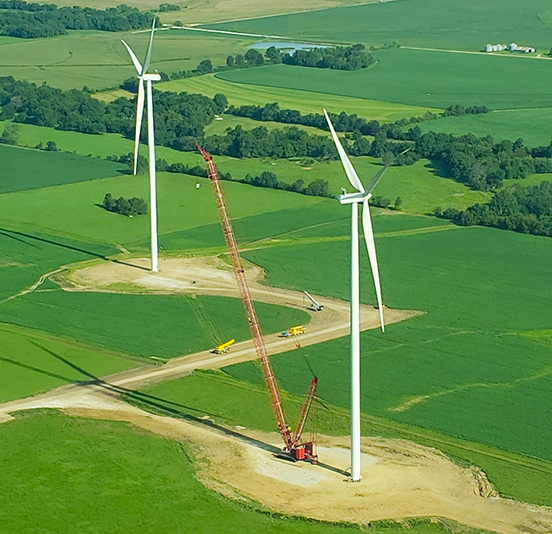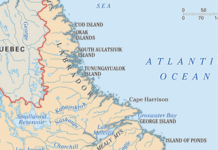The wind industry continues to flourish across the U.S. as a viable source of clean energy and is a favorite of utilities due to its low cost of production and clean footprint. With momentum at its back, wind is a proven and invaluable renewable energy source from coast to coast.
Looking ahead, we see several key trends that will shape the wind industry and U.S. power market over the next five years as the electricity generation mix continues to experience rapid change.
Large-platform turbines
The wind industry is seeing a strong movement toward larger turbines, with manufacturers now offering up to 5 MW and 6 MW platforms. These larger, taller turbines help make wind economical in more geographies and on land-constrained sites. However, due to the overall size, there are significant impacts to design, installation methods, and construction schedule and costs that need to be considered.

Preparing a site for larger turbines adds time and costs to projects, and developers need to carefully plan for those needs when developing project sites for construction. Examples include significant public road upgrades and larger infrastructure corridors and erection areas.
Cost increases can be controlled by engaging an engineering, procurement and construction (EPC) firm early to minimize turbine locations with significant cut/fill needs, optimize delivery routes, understand geotechnical risks and develop mitigation strategies.
Energy storage
The nation’s energy infrastructure will undergo a significant transformation over the next five years due, in large measure, to the emergence of larger, less costly and more efficient battery energy storage.
Battery storage is a disruptive technology that is helping transform how electrical power is generated, distributed and consumed. With regulatory and permitting changes under way, battery storage will benefit the electrical grid by supporting dynamic generation and demand, which, in turn, supports increased levels of wind and solar power production.
Energy storage technology continues to advance rapidly and will make the overall U.S. energy system operate more effectively. Growing in complexity, we see a trend with customers who want to place energy storage solutions in locations closer to renewable energy projects or to load centers. In doing so, there are increased land development issues and greater financial impacts that require more detailed development planning up front.
Policy
The role of government policy in the growth of wind energy has been vital. The national Production Tax Credit (PTC) is by far the most influential policy the industry has seen, which helped launch and sustain the industry as it matured through several economic cycles.
The PTC is scheduled to run through 2024, and it continues to spur investment and growth in U.S. wind power. Growth in wind is expected to remain strong when the PTC sunsets in four years, signaling the policy has been effective in its purpose.
State-level renewable portfolio standards (RPS) and emissions-reduction targets are further encouraging growth of renewable sources. According to the American Wind Energy Association, 30 states plus the District of Columbia and Puerto Rico have renewable energy targets. Increasing renewable energy use, and the cost savings associated with it, will continue to put downward pressure on consumer energy prices. It will also benefit the economy by creating more employment opportunities in the industry.
Transmission
One of the greatest limiters on the expansion of wind power is the availability of transmission and power delivery systems. It is an ongoing need for utilities to continually build capacity to keep up with the volume of renewable energy projects coming online in varied and remote locations. Concurrently, the U.S. energy grid is experiencing greater constraints as energy production and demand become more dynamic.
There are ways to expedite projects with different delivery methods and the utilization of virtual design and construction tools. We are working with the industry to figure out the most effective ways to build and implement HVDC converter stations and transmission lines and implement smart grid technologies that support remote generation.
Repowering
According to the U.S. Energy Information Administration, wind energy was the source of about 7% of total U.S. electricity generation and about 42% of electricity generation from renewables in 2019. As wind production continues to grow, strong operations and maintenance strategies are vital to ensure high availability and to capture the best return on investment for owners.
Many existing turbines throughout the U.S. are reaching the end of their life expectancy or have obsolete technology that is no longer supported by the original equipment manufacturer.
Repowering has emerged as a way for turbines to be replaced or upgraded with modern technology, prolonging the life expectancy, increasing the capacity factor and minimizing maintenance costs. Having an accurate understanding of the cost of major component repairs, foundation collars, partial repowering, or full decommissioning and rebuilding of a wind project is a critical component when determining the long-term strategy of operational projects.
Tim Maag is vice president and general manager for Mortenson, a company that has been focused on wind power EPC, BOP, O&M and repowering for 25 years.




